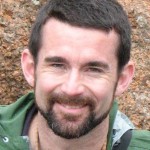 Social context and relationships may shape what drives our patients, but sometimes the best way to ponder these is on a drive!
Social context and relationships may shape what drives our patients, but sometimes the best way to ponder these is on a drive!
En route to a home visit today, I was met at the edge of town by a road crew doing last-minute sealing work before the onset of winter (despite what you may have heard, Wisconsin only has two seasons—winter and road construction!). As I sat mildly frustrated at the wait until they let us pass, I found myself wondering how many of the road crew, might actually be my patients. (In the end, no faces were familiar, but still it left me thinking).
The home visit was actually relatively straightforward, nothing new going on, no new needs requiring attention. On departing, I decided to both avoid another road construction delay, and take some back roads into town that I seldom explore.
Though the late autumn day was a bit gloomy, the drive was relaxing and the nearly empty, winding rural roads a pleasant change from my usual highway route. Passing numerous Amish farmsteads, I pondered the unique inner workings of a faith that promotes simplicity that seemingly centuries old, yet allows for gas powered equipment in the fields and sawmills. The Amish buggies parked at numerous farms were repeated reminders that rounding each rural bend requires extra care and attention, to watch not only for trucks and cars, but also for the slow moving horse drawn Amish buggies.
After several more twists and turns, I was startled by a large pipeline passing over the road. “Frac” sand mining has made its presence known here—to the chagrin of those concerned about excessive mining and water drainage issues, and to the benefit of those who’ve taken new jobs at the mine. Whether you approve or disapprove of the mining, though, it is hard to mistake the visual impact of two large mining sites, and the large pipeline between them, on the rolling farmland. And what do the people think who have the pipeline passing their front door?
Road crews, a home visit, the Amish, the mine, and the miners… All connected by geographic proximity, but in so many other ways as well. The road crews and the mine provide work, and while we may debate the economic vs environmental impacts of the mine, we all want good roads. The Amish lend an air of “antiquity” to the area, yet are far from simply being a curious culture to observe – they are active, if in a somewhat different way, members of the local economy and social structure.
Appreciating social context is time consuming, and cannot be done comprehensively all at once in a single encounter—perhaps not even easily over multiple encounters. But social history is more than just the “context” defining one person. It is the web of relationships and the overlapping, interacting spheres within which each person lives.
Social context can be touched on in clinic, it can be appreciated in more depth in the home, but in some ways the interrelationships and overlapping spheres of life in which our patients live can’t be appreciated without getting out for drive.
William E Cayley Jr practices at the Augusta Family Medicine Clinic; teaches at the Eau Claire Family Medicine Residency; and is a professor at the University of Wisconsin, Department of Family Medicine.
Competing interests: “I declare that that I have read and understood the BMJ Group policy on declaration of interests and I have no relevant interests to declare, but I really like back-road drives!”
